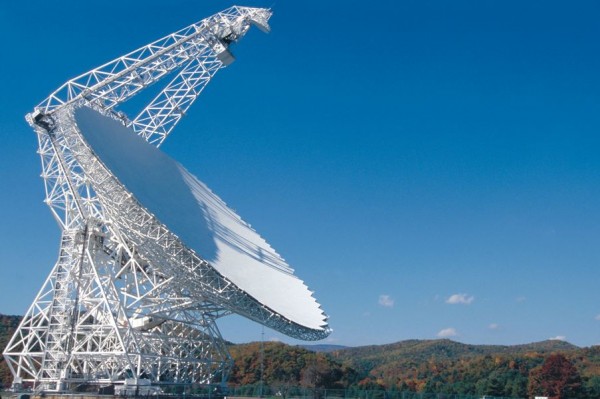Astronomers Want Roomba 'Lawnbot' Banned
| Arthur Dominic Villasanta | | Apr 17, 2015 11:32 AM EDT |
(Photo : NRAO) NRAO's Robert C. Byrd Green Bank Telescope
Big problems come in small packages and U.S. astronomers using some of the world's largest radio telescopes want to ban a new lawn mowing Roomba robot from operating in their vicinity.
The problems with this new version of Roomba, say these astronomers, is the radio frequency to be used by this autonomous robotic lawn mower made by a company called iRobot.
Like Us on Facebook
In a public comment addressed to the U.S. Federal Communications Commission, astronomers said this radio frequency could jam their radio telescopes and prevent these multi-million dollar pieces of marvelous human engineering from viewing star formation in distant galaxies.
The iRobot lawn mowers or lawnbots will be using a frequency range reserved for telescopes -- 6240 MHz to 6740 MHz--said the National Radio Astronomy Observatory (NRAO).
"The purpose of singling out this frequency band is to allow interference-free observation of the 6.66852 GHz spectral line of methanol (CH3OH) that is abundant in star-forming regions and serves as a galactic beacon of star-forming activity owing to its maser-like qualities," NRAO officials wrote to the FCC.
"This also allows the Observatory's telescopes to do a kind of celestial cartography that measures distances to star-forming regions with high precision, charting the course of galactic evolution."
Harvey Liszt, spectrum manager with the NRAO, told Wired the organization isn't trying to stop Roomba from being sold. NRAO just wants people to respect where its telescopes are.
The Roomba versus radio telescope controversy arose when iRobot, maker of the popular Roomba robot vacuum cleaner, asked the FCC to grant their customers permission to use small, localized portions of the radio spectrum.
In its reply to the NRAO, iRobot said its new lawnbot will be limited to residential use. It claims a 12 mile buffer between any radio telescope and a lawnbot system is enough to ensure no interference with radio telescopes.
Trouble is the NRAO wants a 55 mile buffer between any lawnbot and its radio telescopes.
One of these radio telescopes is The Robert C. Byrd Green Bank Telescope (GBT), the world's largest fully steerable radio telescope. It's part of the NRAO site at Green Bank, West Virginia.
GBT is located within the National Radio Quiet Zone (NRQZ), a large area of land in the United States in which radio transmissions are strongly restricted by law to facilitate scientific research and military intelligence.
©2015 Chinatopix All rights reserved. Do not reproduce without permission
EDITOR'S PICKS
-

Did the Trump administration just announce plans for a trade war with ‘hostile’ China and Russia?
-

US Senate passes Taiwan travel bill slammed by China
-

As Yan Sihong’s family grieves, here are other Chinese students who went missing abroad. Some have never been found
-

Beijing blasts Western critics who ‘smear China’ with the term sharp power
-

China Envoy Seeks to Defuse Tensions With U.S. as a Trade War Brews
-

Singapore's Deputy PM Provides Bitcoin Vote of Confidence Amid China's Blanket Bans
-

China warns investors over risks in overseas virtual currency trading
-

Chinese government most trustworthy: survey
-

Kashima Antlers On Course For Back-To-Back Titles
MOST POPULAR
LATEST NEWS
Zhou Yongkang: China's Former Security Chief Sentenced to Life in Prison

China's former Chief of the Ministry of Public Security, Zhou Yongkang, has been given a life sentence after he was found guilty of abusing his office, bribery and deliberately ... Full Article
TRENDING STORY

China Pork Prices Expected to Stabilize As The Supplies Recover

Elephone P9000 Smartphone is now on Sale on Amazon India

There's a Big Chance Cliffhangers Won't Still Be Resolved When Grey's Anatomy Season 13 Returns

Supreme Court Ruled on Samsung vs Apple Dispute for Patent Infringement

Microsoft Surface Pro 5 Rumors and Release Date: What is the Latest?










